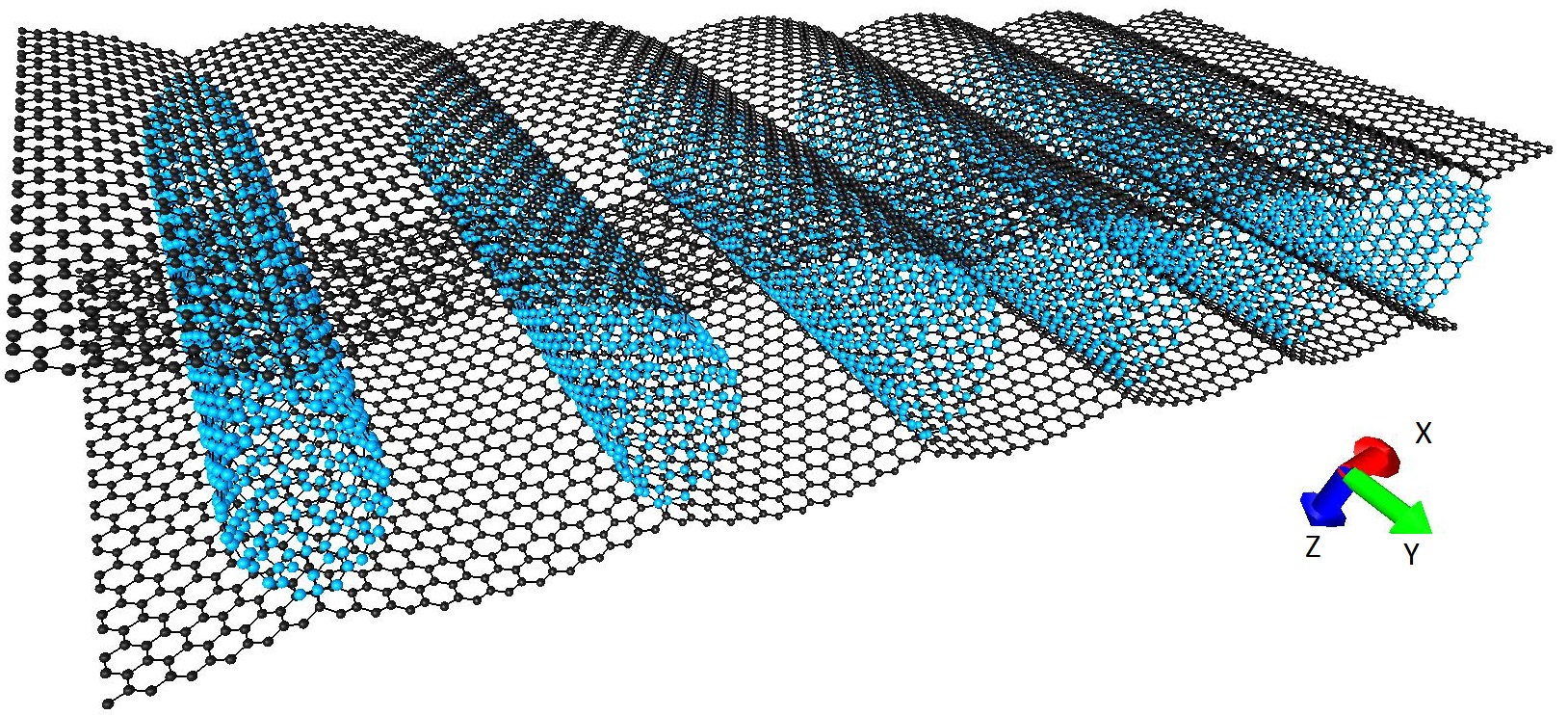The scientific team of the Department of Radio Engineering and Electrodynamics and the Department of Mathematical Modeling of the Educational and Scientific Institute of Nanostructures and Biosystems has been actively working in the past few years in the scientific direction devoted to studying the features of the atomic structure and predicting the physical properties of carbon composite materials based on graphene and its derivatives. The new work of the team "Hybrid carbon nanotube-graphene monolayer films: Regularities of structure, electronic and optical properties" is devoted to 2D carbon nanofilms based on covalently bound nanotubes and graphene. This new carbon material is currently the object of close attention of scientific groups from various universities and institutes of the world. Already, it is predicted that 2D films of carbon nanotubes / graphene will form the elemental base of a new generation of photovoltaic devices and nanophotonics. The subject of scientific interest in the work of Saratov scientists was the discovery of the mechanism of covalent bonding of graphene and nanotubes in the composition of the composite, the determination of the energy-stable configurations of the structures obtained and the numerical evaluation of the electronic structure and optical characteristics of the new carbon composite. The study was of a complex nature and was carried out with the help of intellectual developments of the SSU - the software platforms KVAZAR and MIZAR. This work was carried out jointly with the scientists of the Institute for High-Performance Computing (Sinagpur), the cooperation with which was established in 2012 by Professor O.E. Glukhovа during the period of scientific internship. With the efforts of the teams, new knowledge was obtained in the field of electronic and optical properties of the graphene 2D composite material and its prospects for nanophotonics were shown. The results of joint scientific work are published in the foreign magazine "Carbon" by Elsevier, which is the recognized leader in the world among scientific publications specializing in the publication of works in the field of carbon nanostructures. The impact factor of the magazine according to the Web of Science platform is 6.19. More information about the article "Hybrid carbon nanotube-graphene monolayer films: Regularities of structure, electronic and optical properties" can be found on the website of Elsevier.






